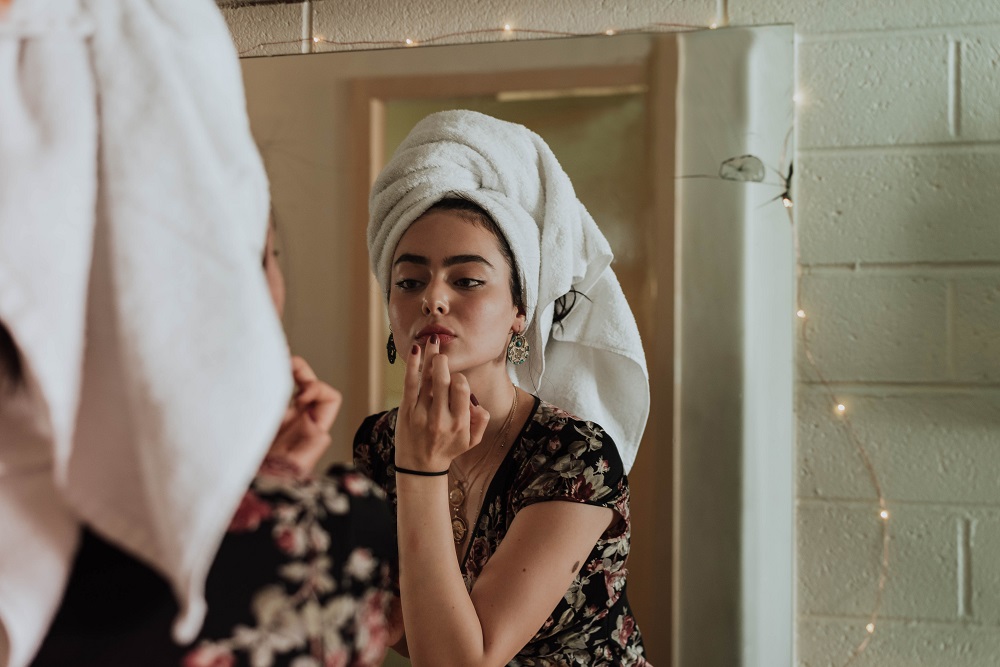
I’m a big believer in controlling what you can to live a long happy and healthy life. What happens within the four walls of your home you have complete control over, but what happens when you walk out the front door you have very little to no control. Now, what type of things am I referring to here? Food, is definitely one of them and a huge component to living a healthy life. However, what you put ON your body is just as important as what you put IN your body, Your skin is your largest organ and absorbs up to 60% of what you put on it (1). Unfortunately, the personal care product and cosmetic industry is highly unregulated which I will discuss in more detail later. My goal for this blog is to arm you with tools to start navigating through your own home, making you a more conscious and mindful consumer.
Listen, I’m just as guilty as anyone else out there. I used to go in the store pick out my favorite foundation, lipstick, shampoo, conditioner and not think twice about my purchase. I liked what I liked and purchased my desired products, no questions asked. I stopped being that type of consumer when I got breast cancer four years ago and my whole world got flipped upside down.
Of course I asked myself, why me? How could this happen to me at the young age of 35? I had a 3 and 5-year-old at that time and had a long road to recovery, but I was determined as ever to make positive changes in my home for my health and the health of my family. So, the journey began!
I began working with a holistic nutritionist and learned how to detox my pantry, refrigerator and eventually moved over to my personal care products. I was introduced to a company called Beautycounter whose mission was to put safer products into the hands of everyone. How can we not all believe in that, right? The reason I mention this company is simply because I learned a lot from them on what to look for on my labels and specific facts about the lack of regulation in our country. For example, did you know the last time a major federal law was passed in regards to personal care products was in 1938 (1). Yes, you heard that right, 1938, that was 80 years ago! Think about how much the world has changed in that time.
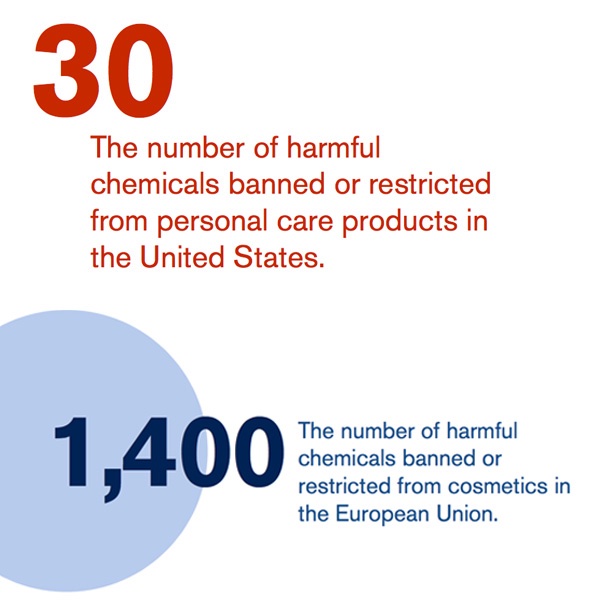
Due to the lack of regulation, the Food and Drug Administration (FDA) does not have the power to ask cosmetic companies for safety data or to even issue recalls of products found to be unsafe. Another crazy statistic is that in the United States we only have 30 banned chemicals while Europe has over 1400 (1). How crazy is that? Canada has also banned or restricted 600 harmful chemicals from their personal care product industry (1). We often wonder why there is so much illness in our country, have you ever thought it could simply be from factors that you can control? Now I’m not saying that your lipstick or lotion are going to give you cancer, one product is unlikely to cause serious harm. But, how many of us really just use one product? Now I want you to think about how many products you use in a single day and start adding them up. Shampoo, conditioner, soap, body lotion, deodorant, lipstick (multiple times a day), foundation, blush and the list goes on.
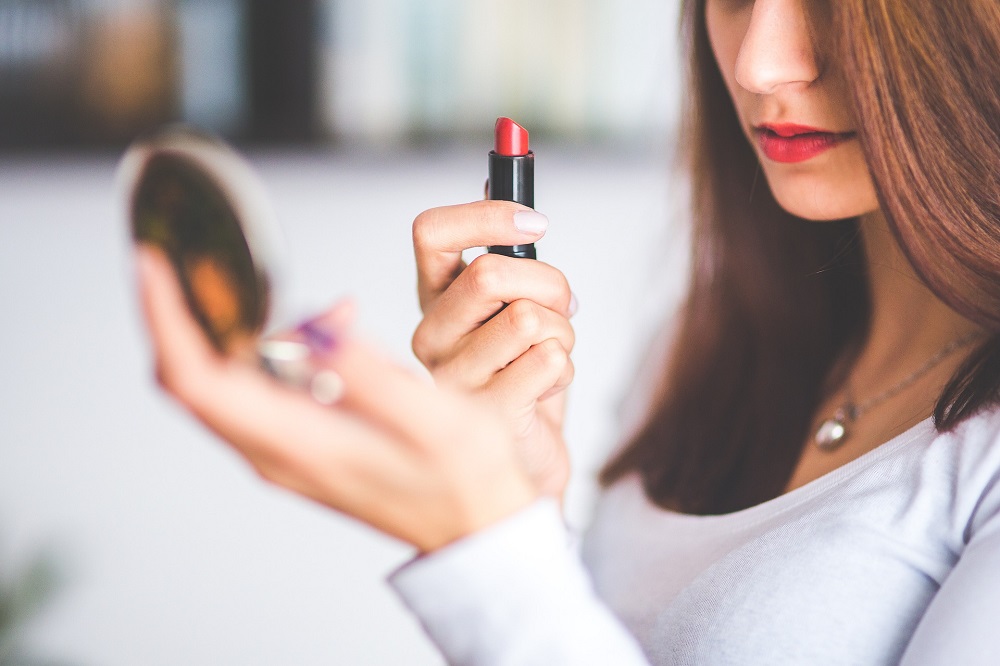
The average American puts 12-20 products on their skin daily (1), it adds up quite fast. If you are using toxic products on your largest organ day after day, year after year, decade after decade, those small doses of chemicals accumulate in our bodies over time and can be harmful to our health. With 1 in 3 women and 1 in 2 men who will be diagnosed with cancer in their life (1), it’s time to take control.
Since our government isn’t doing all they can to protect us, how can we be our own advocates? Well, it all starts with becoming familiar with certain chemicals to avoid. Let’s discuss the top 5 chemicals to stay away from and why.
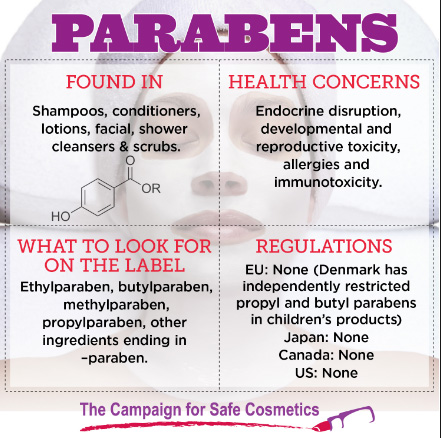
Parabens
Parabens are a class of preservatives used to prevent the growth of bacteria and mold (2). Parabens are commonly found in foundations, body lotions, cleansers and body wash and are endocrine (hormone) disruptors. Hormone disruptors affect how estrogen and other hormones work in the body. They may block certain hormones or mimick them in a way that changes the hormonal chemistry in the body. The most common type of breast cancer is hormone-receptor-positive. With that said, many women with breast cancer or those aware of the risks of parabens will opt to stay away from products that act like estrogen in any way. Pay attention to your labels and look for ingredients like methylparaben, propylparaben, ethylparaben, and butylparaben.
Fragrance
As consumers, do we really know what the word fragrance means? Unfortunately, the answer is no. The word fragrance alone can have dozens or even hundreds of chemicals in it. Since there is such a lack of regulation in our country, companies aren’t required to disclose all the chemicals that are used to make the “fragrance” which is very scary. My best advice is to just avoid any products with fragrance in it. This also means say goodbye to your favorite cologne or perfume. A healthier alternative would be to invest in some pure certified essential oils and use those as your perfume.
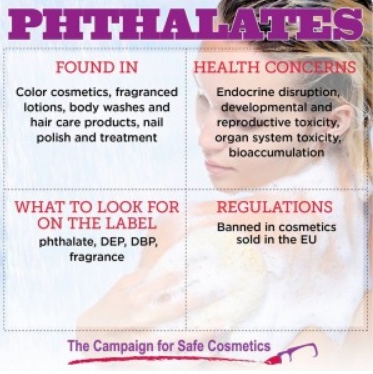
Phthalates
Phthalates (DBP, DEHP, DEP and others) are a class of plasticizing chemicals used to make products more pliable or to make fragrances stick to skin (2). Phthalates are also hormone disruptors and not only increases the risk of breast cancer, but can also cause early breast development in young girls. You can reduce your exposure to phthalates by avoiding packaged or processed foods which may have had contact with packaging materials. To limit exposure in your home, make sure to only purchase shower curtains and flooring that are PVC free. This is just a couple of examples of a couple of ways to control what you can within four walls of your home.
Formaldehyde and Formaldehyde-releasing preservatives (FRPs)
Formaldehyde is commonly used as a preservative in cosmetics and also found in many hair products. These chemicals, which help prevent microbes from growing in water-based products, can be absorbed through the skin and have been linked to cancer and allergic skin reactions (3). Formaldehyde can be found in many products like shampoo, nail polish, body wash and color cosmetics. Nowadays you will see labels that say formaldehyde free which is great, but still pay attention to the rest of the label because there could be some other unsafe ingredients used instead. Formaldehyde based ingredients to look for are: quaternium-15, DMDM hydantoin, imidazolidinyl urea, diazolidinyl urea, polyoxymethylene urea, sodium hydroxymethylglycinate, 2-bromo-2-nitropropane-1,3-diol (bromopol) and glyoxal.

Oxybenzone
Oxybenzone is a sunscreen agent and ultraviolet light absorber linked to irritation, sensitization, allergies and possible hormone disruption (2). We use sunscreen as a way to protect our skin from any harmful effects of the sun and decrease the risk of skin cancer. However, what if the actual sunscreen you are using has chemicals that are linked to cancer? It’s pretty scary to think about it, but it is in fact true. Out of all the personal care products, safe sunscreen is probably number one on my list. Think about how many times in a day (especially in the summer) that you apply sunscreen on yourself and your children. According to EWG (Environmental Working Group www.ewg.org), Oxybenzone is found in 80 percent of chemical sunscreens (4). The purpose of companies using Oxybenzone is to absorb UV light, but the skin (once again, our largest organ) actually absorbs the chemical and can stay in our bodies for unknown amount of time. Remember, the small doses do add up. Not only is oxybenzone an endocrine disruptor, it may also cause cellular damage and cancer in the body.
Other Resources
Now, I want to go back and talk in more detail about EWG. No, I do not work for them, but I do believe in what they are doing and feel everyone should know about this company. EWG’s mission is to empower people to live healthier lives in a healthier environment (4). Now that is something I can get behind!
When I first got diagnosed, I felt very overwhelmed and didn’t really know what to begin, EWG made it a little easier for me. I started navigating through my home and used their various sites (they have one for cosmetics, cleaning supplies, food and sunscreen) to determine what was safe and what was not. Most of the sites are on a scale of 1-10, 1 being the best and 10 being the worst. The cleaning supplies one is rated on an A-F scale, F being the worst just like in school. I discovered that most of the products I used on my skin and that I cleaned with were all rated either D or F’s. This was mind blowing and very overwhelming for me on top of everything else I was dealing with at that time. Now some people would take the approach of finishing what they have first before disposing of it, but this was my health and my life at stake here, so I decided to get rid of everything in one clean sweep and control what I could. When you surf around the skin care and cosmetics site (www.ewg.org/skindeep) you can look up other categories such as hair, nails, oral care, men’s and EWG even has an app for your phone called EWG’s Healthy Living! This app allows you to scan a barcode on a product while in the store and its rating will pop right up, how cool is that? It even breaks it down by cancer, developmental & reproductive toxicity, allergies & immunotoxicity concerns then it takes all those factors into account and gives it a rating. You can also search by going to the specific links listed at the bottom on this blog.
All these sites have tens of thousands of products on it, but what if it doesn’t have that one product that you are looking for information on? That is where Beautycounter’s Never List came into play, that was my plan B (https://www.beautycounter.com/the-never-list). I felt between those two tools that I could make the positive changes necessary to protect my health and the health of my family.
I also like to refer to www.safecosmetics.com and www.breastcancer.org, both have very useful information on them and I highly recommend you spend some time surfing around their sites.
How You Can Take Action
You may be reading this and asking yourself, is there anything I can do to have my voice heard? In fact, there is and it doesn’t require much of your time. First, you can call the capitol switchboard at 202-224-3121 and ask to be connected to one of your U.S. senators. It will then ask you to say the state you live in and the operator will then connect you. Then, let your senator know you are concerned about harmful ingredients that are being using in the skin care and cosmetics industry. Let your voice be heard by stating this is unacceptable and ask them to take action and update our laws to better protect our health. You can also text “BetterBeauty” to 52886 to ask all of the members of Congress for better beauty laws. Lastly, share this information with your family and the friends. The more voices we have in this movement the sooner change will happen.
As I mentioned at the beginning of this blog, my goal is to arm you with information to make positive changes in your life. I hope you have found the above information helpful and good place to begin making positive changes in your life.
Randi Klein – WHEN Advisor
1 – Beautycounter’s Health and Safety Facts
2 – Beautycounter’s Never List
3 – http://www.safecosmetics.org/get-the-facts/chemicals-of-concern/formaldehyde/
4 – www.ewg.org